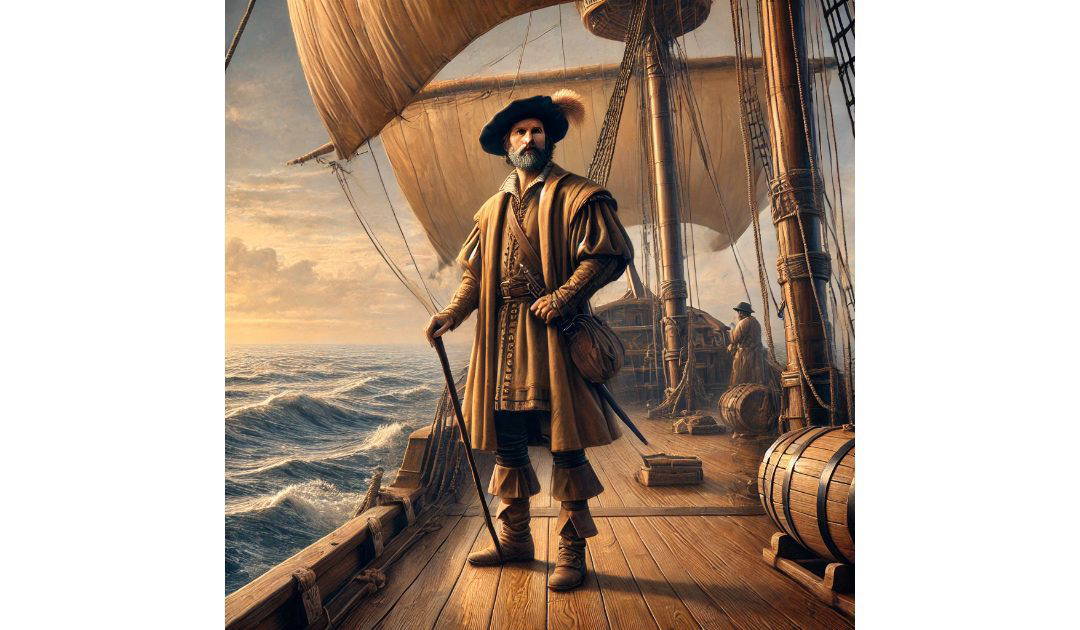On the 5th of March, 1496, King Henry VII issued letters patent to John Cabot and sons to explore unknown lands. Having worked, lived, and met my wife, Claire, in Bristol, John Cabot is a familiar explorer to me. I’ve posted about the first encounter with native Americans, so let’s move onto the discovery.
John Cabot (c. 1450 – c. 1499) was an Italian navigator and explorer best known for his 1497 voyage to North America under the commission of Henry VII of England. His journey is significant as it marked one of the earliest European explorations of the North American mainland after the Norse expeditions led by Leif Erikson. Cabot’s voyage laid the groundwork for England’s future territorial claims in the New World.
John Cabot was born as Giovanni Caboto around 1450 in Genoa or possibly Gaeta, both of which are in present-day Italy. As a young man, he moved to Venice, where he became a Venetian citizen in 1476. Like many merchants of the time, he was involved in maritime trade, traveling to the eastern Mediterranean and possibly as far as the Levant, where he gained experience in navigation and trade routes. During this period, he developed an interest in exploration, particularly in finding new trade routes to Asia.
By the late 15th century, European exploration was accelerating due to the desire for new trade routes to Asia. The Portuguese and Spanish were leading the way, with Bartolomeu Dias rounding the Cape of Good Hope in 1488 and Christopher Columbus reaching the Caribbean in 1492. Inspired by these discoveries, Cabot believed he could find a shorter route to Asia by sailing westward across the Atlantic.
Finding little support for his plans in Spain or Portugal, Cabot moved to England around 1495. He settled in the port city of Bristol, which had a history of Atlantic voyages. England’s King Henry VII, eager to compete with Spain and Portugal in exploration, granted Cabot a royal patent on 5th March, 1496. This patent allowed him to sail under the English flag, seeking new lands for England and exclusive trading rights.
Cabot’s first attempt in 1496 was unsuccessful due to bad weather and financial difficulties. However, in May 1497, he set sail again from Bristol aboard a small ship, the Matthew, with a crew of about 18 to 20 men. After about five weeks at sea, he sighted land on 24th June 24, 1497. The exact location of his landfall remains debated, but most historians believe he reached either Newfoundland, Cape Breton Island, or Labrador, present-day Canada.
Unlike Columbus, who landed in the Caribbean, Cabot had discovered part of the North American mainland, making him the first European since the Vikings to set foot there. He claimed the land for England, noting its abundant fish resources, which later played a significant role in European fishing activities in the North Atlantic. However, there is little evidence that he made significant contact with indigenous peoples.
Encouraged by his success, Cabot secured funding for a second voyage in 1498. This expedition was much larger, with five ships and around 200 men. However, details about the mission remain scarce. Some records suggest that his fleet encountered severe storms, and only one ship returned to England. The fate of Cabot himself remains a mystery, with speculation ranging from his death at sea to his possible return to England in obscurity.

